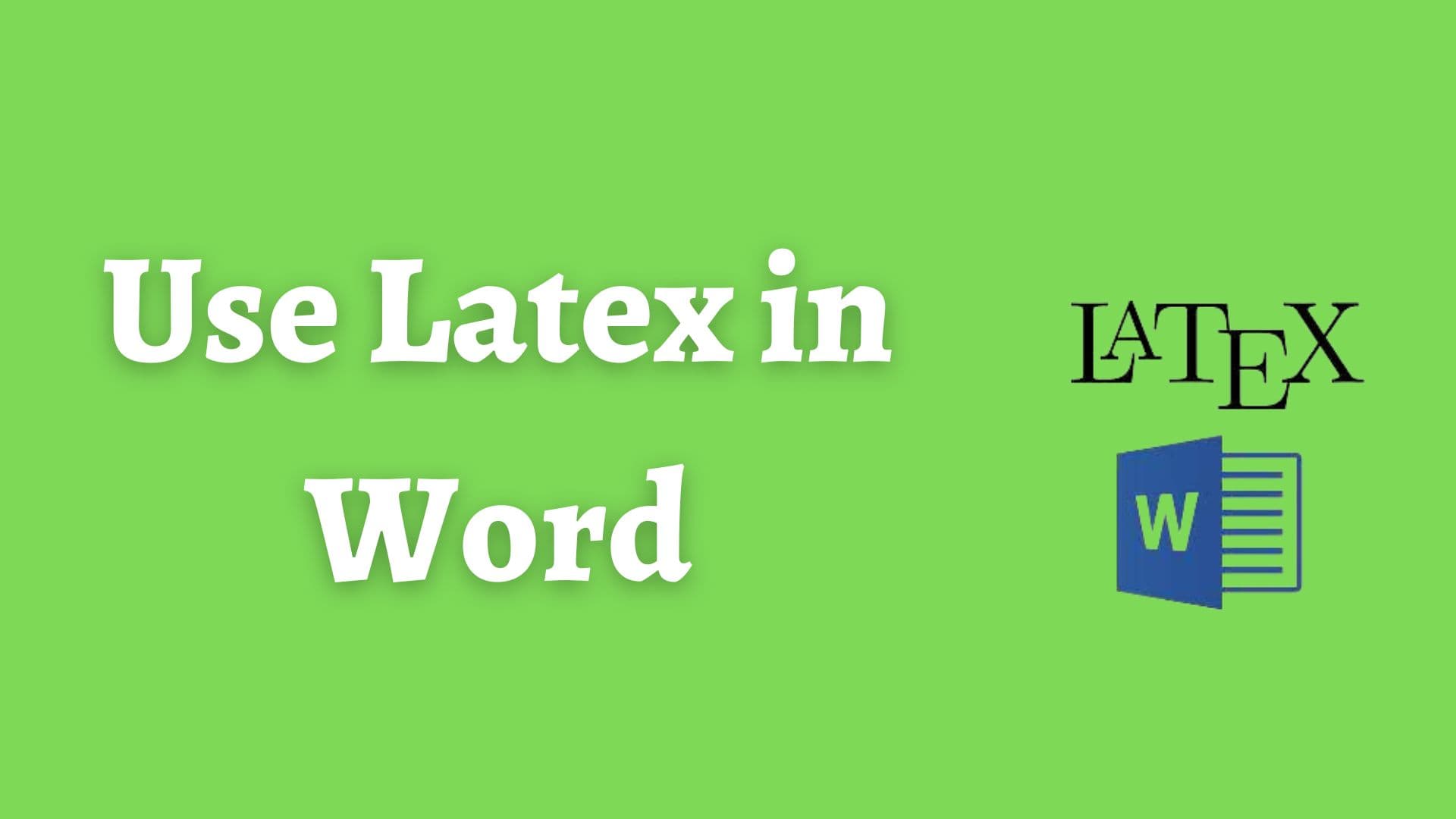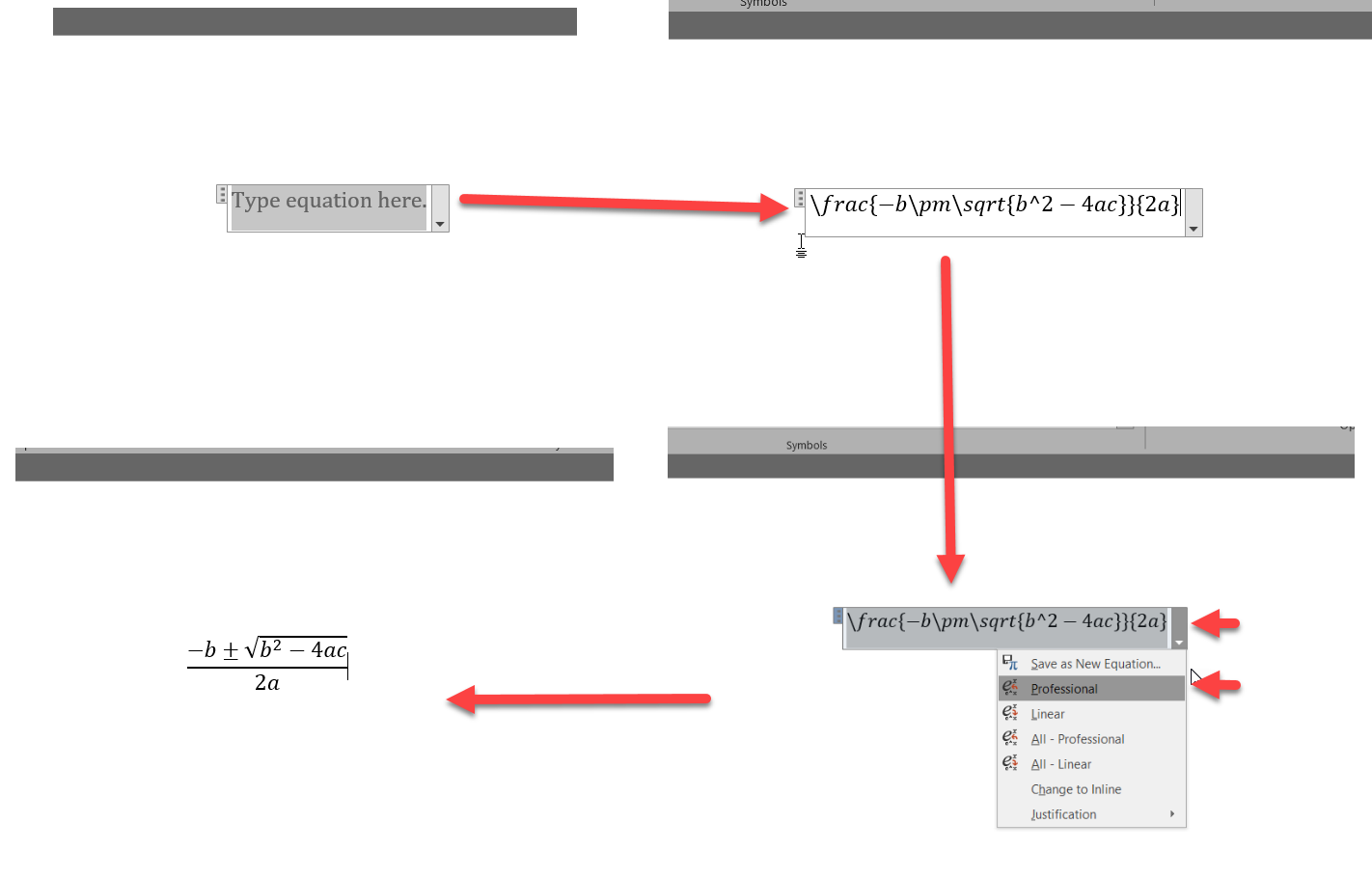How to Fix Discord Error: 'Installation Has Failed'

The use of LaTex Software has become the industry standard for the communication, and publication of scientific documents. It is an application that does not require any fees to be paid in order to use it, as it is entirely free.
However, you can use the LaTex Option in Word if you are a regular user of Microsoft Word and enjoy using various mathematical expressions and equations. If that's the case, this article will be helpful to you.
Since Latex Software provides many features for quickly typing complex mathematical equations, Microsoft recognizes Latex's ease of use, and MS Office, such as MS Word, began supporting Latex in Office 365 Version 1707 or later.
Using Latex Syntax in Office 365 Version 1707 or Later is very simple. Here are the steps.
1 Open MS Word
2 Open the Latex Option by going to Insert > Equations > Latex or press the keyboard shortcut ALT + =
This will open a small Latex Equation Box.
3 Type your desired Mathematical equation inside that box in Latex Ways.
For example: \frac{-b\pm\sqrt{b^2-4ac}}{2a}
4 In that box, at the bottom right corner, click on the Down arrow and select "Professional"
5 Now, the above Latex will be processed into Equation Editors as shown below.
If you like to convert it back to Latex format you can easily do that. For this, again click on the down arrow and select Linear or simply press Ctrl + Shift + =.
In this case, MS Word does not have an integrated Tex Processor; rather, it relies on pattern matching in order to transform straightforward LaTeX syntax into the format used by the system's native mathematical equations.
The formatting of the mathematical expressions and equations is merely an attempt to generate a Latex-style for MS Word.
The vast majority of the commonly used syntax in LaTeX is supported in the most recent version of Word. But even some of the Latex Keywords like \Bar , \Middle, ,\Lbrack , \normal ,\|div ,\end , \dsmash , \norm etc are not supported properly.As may be seen in the following table, the Microsoft Official website provides a list of 20 different syntaxes that are not supported.
I really hope Microsoft will fix this issue in the near future.
Conclusion:
In this way, we can use Latex in MS Word.
Some Popular used Math Equations in Latex:
Integral Equation
\int_{a}^{b} f(x) dx
Area of Circle
Geometric Series
Binomial Coefficient
Normal Distribution
Laplace Transformation of a function
Fourier Transform of a function
Gravitational Force between two bodies m1 and m2
Formula for the Taylor series expansion of a function
f(x) = \sum_{n=0}^\infty \frac{f^{(n)}(a)}{n!}(x-a)^n
Note that you can simply copy and paste these equations into Word Equations Editor. Then the equations will appear in a word document.
FAQ:
Documents written in LaTeX, AMS-LaTeX, Plain TeX, or AMS-TeX can be converted to the Microsoft Word file format with GrindEQ LaTeX-to-Word. Visit here.
Word's Equation editor limits LaTeX's math equation creation power. The editor may not support all LaTeX commands and have fewer formatting choices than a dedicated LaTeX editor. LaTeX in Word may require extra configuration.
Double-clicking a LaTeX equation in Word opens the Equation tool, allowing you to edit it. From there, you can edit the LaTeX code or format the solution using the editor.
No, Word also has an in-built Equation editor that offers a graphical user interface for the purpose of generating mathematical expressions and equations. Users who are not familiar with LaTeX may find the Equation editor to be a useful choice because it offers a variety of symbols and formatting options and because it is included in the software.

